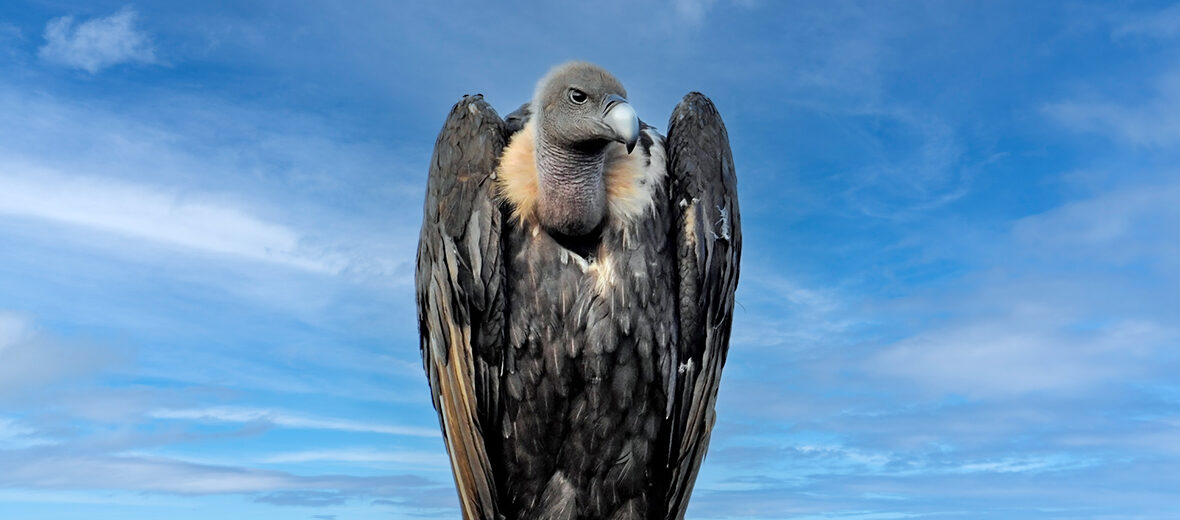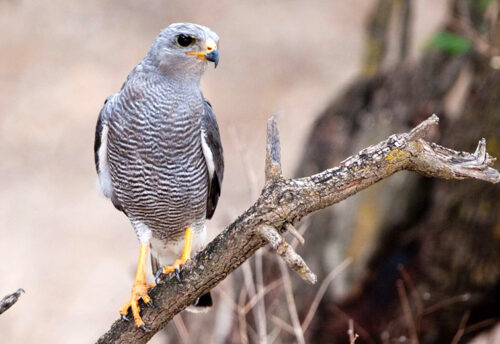
The white-rumped vulture is an Old World (those from Asia and Africa) vulturine species native to southern and southeastern Asia. Numbering into the several million strong, before the 2000s, these birds now number only an estimated 6,000-. This is due primarily to kidney failure as a result of diclofenac poisoning. The remaining populations face numerous threats such as habitat loss and destruction at the hands of agriculture, renewable energy, logging, fires, and fire suppression; hunting; trapping; utility lines, that can cause electrocution; invasive species, that can bring about disease and predation; and pollution. The IUCN lists these vultures as Critically Endangered, and their numbers are still steadily decreasing.
First the Stats…
Scientific name: Gyps bengalensis
Weight: Up to 16.5 lbs.
Length: Up to 37 inches
Wingspan: Up to 8.5 feet
Lifespan: Up to 17 years
Now on to the Facts!
1.) They are closely related to the European griffon vulture.
2.) These vultures were originally described in 1788 by the German naturalist Johann Friedrich Gmelin.
3.) Their primary source of food is carrion (dead animals), such is the case with all vultures.
4.) White-rumped vultures are capable of swallowing chunks of old, dry bones like ribs and skull pieces from small mammals; similar to the bearded vulture.
5.) It was observed that a pack of these vultures were able to clean up an entire bullock (steer) in a mere 20 minutes.
But wait, there’s more on the white-rumped vulture!
6.) They are often plagued by Mallophagan parasites like Falcolipeurus and Colpocephalum turbinatumhave, as well as by ticks.
7.) Nests are constructed in tall trees, usually near human habitations.
Did you know…?
Their roosting trees are typically white from their feces (poop), and the high acidity usually kills the trees. This fact makes them quite unwelcome among orchards.
8.) Females lay a single egg that hatches in up to 35 days.
9.) Both parents participate in incubation duties.
10.) The chick fledges in up to 3 months.
But wait, there’s still more on the white-rumped vulture!
11.) Due to the decline of these vultures, there has been a rise in rabies cases in India.
12.) Conservation efforts have included reintroduction, captive-breeding programs, and artificial feeding stations, aka “vulture restaurants”.
13.) At a facility at Pinjore 2 chicks, which were apparently the first captive-bred white-rumped vultures ever, hatched in January 2007. Sadly, the chicks died just a couple weeks later due to the lack of parenting experience of their mother and father.
14.) They are mostly diurnal (active during the day). However, they will occasionally feed at night.
Now a Short White-Rumped Vulture Video!
Be sure to share & comment below! Also, check out the Critter Science YouTube channel. Videos added regularly!
Want to suggest a critter for me to write about? Let me know here.
Some source material acquired from: Wikipedia & IUCN
Photo credit: Shantanu Kuveskar




